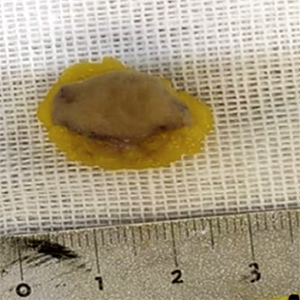A case of human Dirofilaria repens in Rome, Italy: a clinical and radiological challenge

All claims expressed in this article are solely those of the authors and do not necessarily represent those of their affiliated organizations, or those of the publisher, the editors and the reviewers. Any product that may be evaluated in this article or claim that may be made by its manufacturer is not guaranteed or endorsed by the publisher.
Authors
Human subcutaneous dirofilariasis caused by Dirofilaria repens is a vector-borne zoonotic disease mostly transmitted from dogs to humans through a mosquito’s blood meal. Heartworms replication is amplified by the climate change, the increase of the range of suitable vectors, the facilitation of pet travel and the high rate of undiagnosed dirofilariasis in dogs. We describe a case of a young Romanian woman, resident in Rome for 18 years, that came to our attention for the appearance for five months of a subcutaneous nodule in the left arm. The patient reported that she first felt an insect bite, after which she noticed the onset of an erythematous and itchy wheal in the same skin area, turned into a subcutaneous nodule within a few weeks. The ultrasound examination showed a hypoechoic subcutaneous formation of 1,2 cm in diameter, containing a ribbon-like structure made up of hyperechoic parallel double lines, reminiscent of a warm. Based on this suspicion, we opted for the surgical radicalization of the lesion. The histological examination confirmed the radiological hypothesis of a warm-like foreign body morphologically compatible with Dirofilaria repens. Our experience shows how a clinical nonspecific skin nodular lesion may conceal an unexpected and unsettling diagnosis of subcutaneous Dirofilaria repens.
How to Cite

This work is licensed under a Creative Commons Attribution-NonCommercial 4.0 International License.








